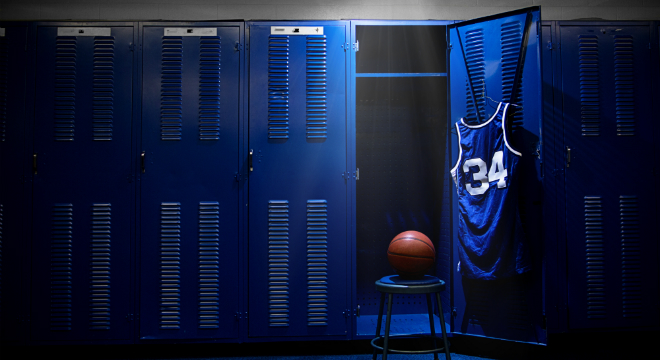Keeping locker rooms free of diseases, infections

The majority of coaches and athletes understand why they need to be cautious about locker room diseases and infections, but not all schools have policies to help keep them safe.
MRSA and other diseases can derail a team’s season, forcing several players to the sideline. While coaches might be aware of the threats, strategies to avoid them are sometimes unclear. Here are a handful of standards athletic directors should mandate when developing a policy for their programs.1. Sanitize all equipment, benches.
Athletes probably know that they’re supposed to clean benches and equipment, but do they know what to use and how to use it? Post signs and disinfectants around the locker room, and list exactly what needs to be sanitized after use. Athletes after a long game or workout are not going to go out of their way to search for cleaners, so athletic directors should ask custodians to make it as convenient as possible. Leave nothing to chance.
2. Organization is essential.
If athletes don’t know where to properly dispose of dirty laundry, it’s going to end up on the floor or on benches. Ask coaches to enforce a policy that requires athletes to put jerseys, towels and used bandages in their proper bins. Have bins clearly marked so that there’s no mistaking what goes where. A lack of organization will only lead to problems down the road.
3. Inspect your equipment.
The Centers for Diseases Control and Prevention advises schools to replace damaged equipment in their locker rooms. Split benches or beat-up lockers can make it difficult to adequately clean the hard-to-reach areas, and that’s where bacteria can grow. Make time to regularly walk through your locker rooms (and weight rooms) with facilities managers and coaches to examine their conditions. If something can inexpensively be replaced, do so immediately.
4. Report sick, injured athletes.
Strongly insist that all sick and injured athletes report to their coaching staffs. There’s a culture of toughness that often encourages student-athletes to play through their ailments, but failing to communicate their health could put other athletes at risk. Injuries like cuts should be properly treated by the athletic trainer to avoid spreading diseases in the locker room, and any athlete suffering from the flu and other viruses should be kept away from practices or games. Coaches must reinforce this policy on a regular basis.
5. Enlist help.
Athletic directors are unable to oversee hundreds of athletes at once, but it’s possible with the help of their coaches. At least once a year, gather coaches for a meeting to discuss sanitation and care for your facilities. Break down the latest policies, concerns and provide handouts that they should give to their athletes. Hold them accountable for the actions of their players, and take time during their annual review to discuss how they’re maintaining the facilities.
These five rules should be standards in all athletic programs, but they’re meaningless if coaches and athletes don’t take them seriously. Proper care for athletic facilities is everyone’s responsibility, and if protocols are ignored, everyone could end up paying the price.












